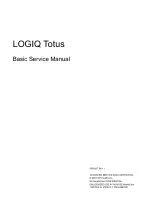
Installation Guidelines
Installation Guidelines
Location & Access
●
The injector should be out of the way, yet
accessible,
●
If your water supply is from a municipal or
public water line, you should comply with
local codes.
●
If your watering system is connected to a
public or potable water source you should
install a backflow preventer so that no
backward flow of treated water into
potable supplies or public mains could
occur. Contact your local water authority
for approved devices and
recommendations to insure that your
installation meets their standards.
●
Install the system neatly and with room for
easy maintenance access.
Environment
WARNING! Never allow the unit
to freeze! The unit is not
warranted for freeze damage.
Freezing can cause expensive damage, even
during storage if the measuring unit and pumpers
have not been properly drained.
A drain should be close at hand The unit
discharges approximately twice as much water as
chemical pumped. The drain line should be kept
short, or expanded to a larger size for runs longer
than fifteen feet.
IMPORTANT! The waste line
must exit to atmospheric
pressure and must not be
elevated or restricted in any way.
Safety
●
Most chemicals used to treat water are
dangerous to someone or thing.
●
Do not permit access by children or pets.
●
Provide safety equipment such as
goggles, gloves, aprons, or anything
common sense tells you you might need.
Store protective clothing and
accessories in a location away
from the injector so that they
may be donned before
approaching the equipment.
●
Check with the manufacturer of the
chemical for safety precautions for
specific chemicals.
●
Label chemicals and keep a supply of
antidotes, neutralizing agents, and safety
precautions handy.
If feeding acid, keep
some baking soda (powdered and
solution) nearby.
●
If feeding dangerous or corrosive
chemicals, you should attach a drain line
to the drain hole in the bottom of the
cylinder, which drains into a chemical
resistant container. An alternative would
be placing a chemical resistant container
directly beneath the drain hole.
●
Protect the injector from corrosive vapors
with adequate ventilation.
Corrosion can
sometimes attack diaphragms from the
back side, resulting in premature
failure.
Water Hammer
WARNING! Water Hammer
Destroys diaphragms.
●
Water hammer can generate pressures
up to 500 psi or more! This puts stress on
the injector (and on your entire water
system), but it is especially destructive to
diaphragms.
●
Water hammer can be a serious problem
in installations with long pipe runs.
●
Solenoid valves can cause water
hammer.
●
If water hammer could be a problem for
your installation, you should install a
suppressor such as a “pop” valve or an
accumulator (captive air device) near your
injector. (See installation example, P. 3)
IGHC-11-10
5
H.E. Anderson Co.



























